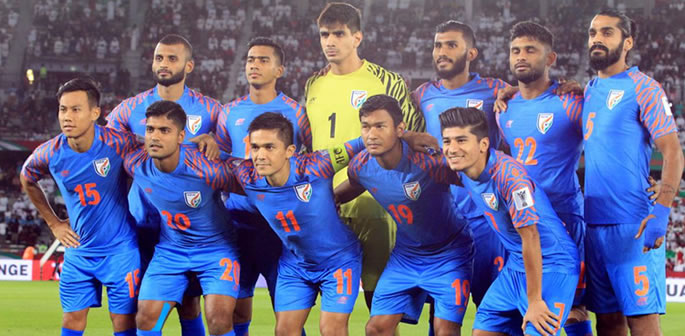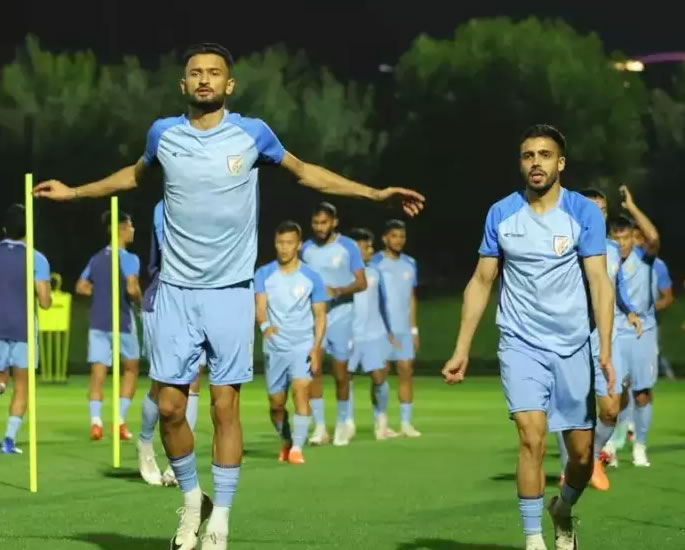90% of India's footballers have hailed from nine states
India has a population of over one billion and is filled with elite athletes. However, there remains a struggle to find quality Indian footballers.
Like his predecessors, FIFA president Gianni Infantino was left baffled when he visited the country in October 2022.
He remarked: “It’s a country of more than 1.3 billion, so there must be enough talent in India.”
It was not the first time a direct link was made between India’s population and its lack of footballing success.
India’s repeated failure to find 11 elite footballers has mystified observers at home and abroad.
A new study might provide answers to this.
Richard Hood, the former head coach of FC Bengaluru United, conducted research to explain the possible reason behind this issue.
We explore the research in more detail.
Mapping Our Minutes
Titled Mapping Our Minutes, Richard Hood revealed that in the whole of India, over 65% of elite footballers come from just five states – Manipur, Mizoram, West Bengal, Punjab and Goa.
The total population of these states is approximately 126 million.
These are the male players (1,112), who have played for India in the junior and senior national teams, as well as the top two divisions of the domestic leagues in the last 22 years.
Hood’s analysis showed that nearly 90% of India’s footballers have hailed from nine states and one city – Greater Mumbai, Kerala, Tamil Nadu, Meghalaya and Sikkim.
These locations are in addition to the previously mentioned five.
To sum up, approximately 20% of India’s population contributes to 90% of its best footballers.
Manipur and Mizoram have contributed most to India’s player pool, accounting for nearly 31% of elite-level Indian footballers.
This is followed by West Bengal (13.5%), Punjab (11.5%) and Goa (9.7%).
In addition, of the 152 players who have played for India since 2002, almost 80% came from just six states and one city (Greater Mumbai), with Punjab leading the way.
So, if there was a football map of India, there would be a large gap in the middle.
This suggests that football has made virtually no inroads into the centre of the country.
The Birthplace Effect
Hood pointed out that the pattern in India is similar to most countries, including France, Argentina and Brazil, where a handful of pockets produce a majority of players.
For example in Argentina, 35.25% of the country’s elite footballers come from Buenos Aires.
But for a country that has a poor scouting system and struggles to form a team that can beat countries like Afghanistan, Hood hoped the research could help “identify areas that require targeted interventions”.
He said: “This could lead to more strategic talent identification and development efforts, tailored to leverage unique strengths and address the specific challenges of different regions.”
Hood attributed this to the ‘Birthplace Effect’.
The Birthplace Effect is known as the place of early development and refers to the phenomenon where a disproportionate number of elite athletes originate from specific geographical locations or regions.
This effect suggests that the environment, resources and opportunities available in certain areas during an athlete’s formative years significantly influence their development and success in sports.
Hood explained: “The birthplace effect can be defined as the tendency for athletes to excel in their chosen sport if they come from regions that provide optimal conditions for skill development, coaching, competition and support system.
“Factors contributing to this effect may include access to high-quality training, facilities, coaching expertise, cultural attitudes towards sports, peer influence and socioeconomic factors.”
Speaking about India, Hood said:
“India too displays the birthplace effect, with Manipur, Punjab, West Bengal, Greater Mumbai, Kerala and Goa exhibiting a high concentration of our minutes played (across various tournaments).
“These seven regional hotspots collectively contribute over 75% of the player pool.”
The influence of a player’s place of birth and the impact on football was measured by studying the participation numbers at an elite level and by analysing the number of minutes each footballer has played in the last two decades.
Match Time
Studying game time helps to understand whether a player is getting a real opportunity or if he is just there to make up the numbers.
One of the biggest criticisms of India’s domestic league is that the homegrown players, especially in key positions like forwards, do not get enough playing time.
This results in them struggling for form when it comes to playing for the national team.
Analysis of 2,265,015 minutes played by Indians in the top two domestic competitions – the Indian Super League (ISL) and I-League.
The men’s national teams (senior, under-23, under-20 and under-17) also made up the minutes played in the research.
It found that nearly 80% of the players who clocked maximum game time while playing for India since 2002 belong to just seven states.
Punjab leads the way when it comes to actual game time with the national team, with its players accounting for 16.69% of the total minutes played.
On the other hand, players from West Bengal and Goa have seen a sharp decrease in playing time.
At their peak, footballers from West Bengal dominated the time on the field when playing for the national team, clocking 36.3% of the playing minutes in the 2006 World Cup qualifiers.
However, the number has dropped to just five per cent during the ongoing campaign for the 2026 World Cup qualifiers.
Similarly, Goa’s players accounted for nearly 30% of match time in 2004, but are now down to 0.4%.
In the under-17s group, players from Kerala got zero playing time while Manipuri players got the most, accounting for 38.54% of the minutes.
In the premier division of club football, players from West Bengal are most in demand in terms of game time, followed by Manipur and Punjab.
Manipur and Mizoram underscore their status as the sport’s homeground, producing more players than any other state who have made debuts in ISL and I-League (157 and 130, respectively).
Finding elite Indian footballers remains a challenge and Richard Hood’s research highlights that not all of the country is being utilised when searching for footballing talent.
While the passion for football in India is undeniable, the pathway to nurturing world-class talent requires concerted efforts at grassroots development, improved coaching standards, investment in infrastructure, and a shift in societal attitudes towards sports.
By addressing these fundamental barriers, India can unlock its vast potential and pave the way for a new era of excellence in football on the global stage.
































































